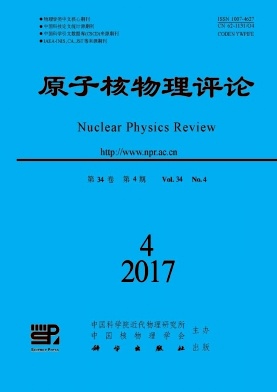| [1] |
ZINKLE S J, WAS G S. Acta Materialia, 2013, 61:735. |
| [2] |
ZINKLE S J. Materials Today, 2009, 12:12. |
| [3] |
MANSUR L K, ROWCLIFFE A F, NANSTAD R K, et al. Journal of Nuclear Materials, 2004, 329:166. |
| [4] |
MAZEY D J. Journal of Nuclear Materials, 1990, 174:196. |
| [5] |
WAS G S. Journal of Materials Research, 2015, 30(9):1158. |
| [6] |
SCHROEDER H, KESTERNICH W, ULLMAIER H. Nuclear Engineering and Design Fusion, 1985, 2:65. |
| [7] |
CHEN J, JUNG P, HOFFELNER W. Journal of Nuclear Materials, 2013, 441:688. |
| [8] |
YAMAMOTO N, MURASE Y, NAGAKAWA J, et al. Journal of Nuclear Materials, 2002, 307:217. |
| [9] |
HASEGAWA A, EJIRI M, NOGAMI S, et al. Journal of Nuclear Materials, 2009, 386-388:241. |
| [10] |
ZHANG C H, YANG Y T, SONG Y, et al. Journal of Nuclear Materials, 2014, 455:61. |
| [11] |
JUNG P, HISHINUMA A, LUCAS G E, et al. Journal of Nuclear Materials,1996, 232:186. |
| [12] |
LUCAS G E, ODETTE G R, SOKOLOV M, et al. Journal of Nuclear Materials, 2002, 307-311:1600. |
| [13] |
ZHANG H Q, ZHANG C H, YANG Y T, et al. Journal of Nuclear Materials, 2014, 455:349. |
| [14] |
YANG Yitao, ZHANG Chonghong, DING Zhaonan, et al. Journal of Nuclear Materials, 2018, 498:129. doi:10.1016/j.jnucmat.2017.10.025. |
| [15] |
ODETTE G R, ALINGER M J, WIRTH B D. Annual Review of Materials Research, 2008, 38:471. |
| [16] |
ZHANG C H, KIMURA A, KASADA R, et al. Journal of Nuclear Materials,2011, 417:221. |
| [17] |
DING Z N, ZHANG C H, YANG Y T, et al. Journal of Nuclear Materials, 2017, 493:53. |
| [18] |
XIAN Y Q, LIU Juan, ZHANG C H, et al. Journal of Nuclear Materials, 2015, 461:171. |
| [19] |
ZHANG C H, CHEN K Q, WANG Y S, et al. Journal of Nuclear Materials, 2000, 283-287:259. |
| [20] |
ZHANG C H, JANG J, CHO H D, et al. Journal of Nuclear Materials, 2008, 375:185. |
| [21] |
ZHANG C H, JANG J, CHO H D, et al. Journal of Nuclear Materials, 2009, 386-388:457. |
| [22] |
LIU Feng, XU Yuping, ZHOU Haishan, et al. Nucl Instr Meth B, 2015, 351:23. |






 甘公网安备 62010202000723号
甘公网安备 62010202000723号 DownLoad:
DownLoad: